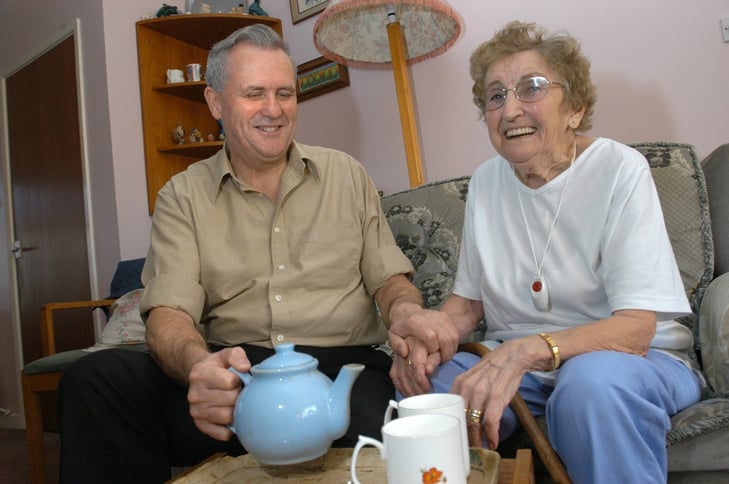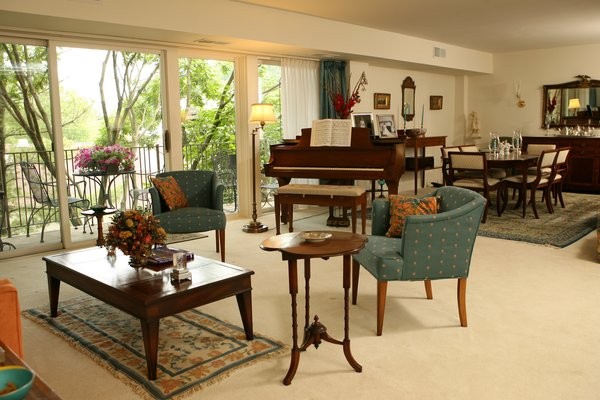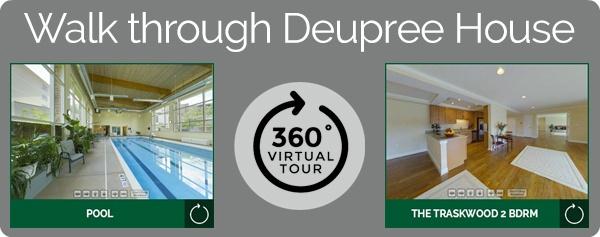If you’re an independent senior living in Cincinnati, moving into a retirement home doesn't mean giving up your self-reliant lifestyle.
Retirement communities today aren’t the institutional nursing homes of the past. They’re open. They’re cheery. Many, like Deupree House in Cincinnati’s Hyde Park neighborhood, are Continuing Care Retirement Communities, in which senior residents can progress as they age, from fully independent retirement living, to assisted living, all the way through advanced memory support and nursing care.
Here are five ways that modern retirement communities support residents’ independence, while providing them with the medical monitoring and support services they need.
1. No home or yard maintenance
Seniors who age in place in their own homes have to worry about repairs, landscaping, lawn mowing and other general upkeep issues to preserve their properties’ values and maintain a safe living environment.
But that’s a concern for retirees who naturally begin to lose their strength and mobility with the advancing years. Eventually, it’s too much to keep up with. And that leaves only two options: pay a lot of nest egg money to lawn services, snow removal services and the like, or sell out.
By moving into an independent living community, seniors can free themselves of the burden of home upkeep.
2. Taxes, utility costs, meals — it’s all included
Seniors who make the move to an independent living community like Deupree House can put money they would otherwise have spent on property taxes and utilities toward their apartment rent. On that basis alone, a move to a retirement community can more than pay for itself.
At most communities, meals are also included in the monthly rent. That frees up residents from the chores of grocery shopping and cooking, and often results in food budget savings.
3. More transportation options
At Deupree House, residents with personal vehicles have their own, assigned parking spaces. Some have their own covered parking.
But residents who don’t drive, or no longer want to maintain a vehicle, can still get wherever they need to go. Like most independent living facilities, Deupree House offers transportation to and from scheduled group outings — including weekly trips to the grocery, the mall, to area churches and more.
And we can make additional arrangements for seniors who need a ride to doctor appointments, who need to run errands, etc.
4. Independent apartment-style living
In the past, seniors in retirement homes had only a single room. Sometimes, they had to share with a roommate.
In modern independent living communities, seniors need do no such thing. Like Deupree House, most newer facilities give individual residents or couples their own apartments, complete with a living room, kitchen, bathroom and bedroom (some even have guest rooms!).
Seniors are largely free to furnish, decorate and customize their apartments as they see fit. They can cook for themselves if they so choose. They can do their own cleaning and tidying, or they can opt for hotel-like cleaning and laundry service (usually for an additional fee).
Regardless of how much or how little help they choose to receive, residents of independent living retirement communities have plenty of freedom to live life as they wish.
(Arnie and Mary Austin, residents since 2014.)
5. Couples can remain together
For aging partners, one of the key advantages of a move to a CCRC is that, if one partner’s health declines faster than the other, he or she doesn’t need to move to another retirement home to receive more care.
Say, for example, that a 67-year-old man and his 64-year-old wife move into one of Deupree House’s Independent Living apartments. For the next 10 years, they live just like they did in their own home, taking care of their own needs, coming and going as they please.
Then, one day, the husband has a stroke and requires additional support. He can start receiving Enriched Living services, but continue living in the same apartment. They’re both receiving the custom level of care they need, but they don’t have to live apart.
One partner can also transition to a care center, representing the continuum of care, without leaving the community at large.
A husband might live, for example, in a Deupree House Independent Living apartment while his wife, who has Alzheimer’s, lives just a short walk away in one of our Deupree Cottages apartments. The physical separation is minimal, and the couple can continue spend their days together with little disruption.
Modern independent living communities promote senior independence.
Naturally, seeing is believing. So we invite you to see for yourself.
If you’re interested in learning more about Independent Senior Living at ERS, or about the Continuing Care Retirement Community model, come take a tour. We’d be happy to host you and to answer your all your questions.














